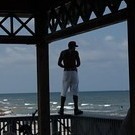Let's discuss the Super-Angulon
-
Recently Browsing 0 members
- No registered users viewing this page.
-
Similar Content
-
- 21 replies
- 5,190 views
-
- 18 replies
- 685 views
-
- 4 replies
- 631 views
-
- 1 reply
- 229 views
-
- 18 replies
- 644 views
-




Recommended Posts
Join the conversation
You can post now and register later. If you have an account, sign in now to post with your account.
Note: Your post will require moderator approval before it will be visible.